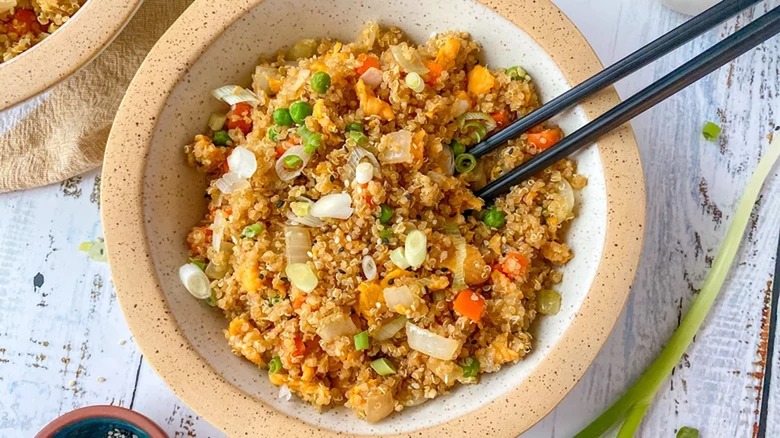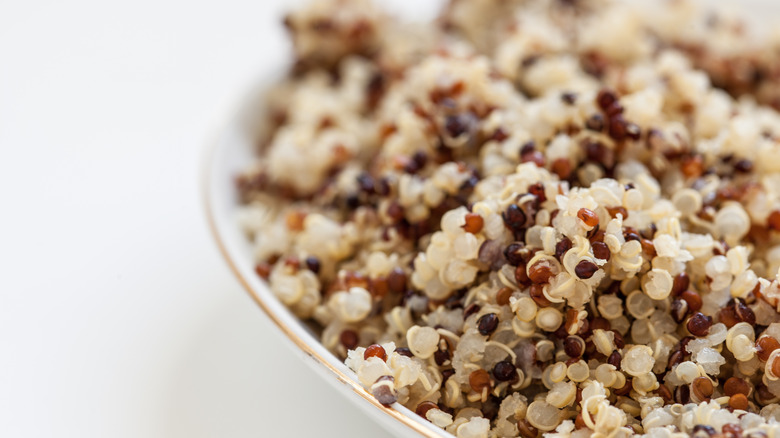Leftovers Are Best When Making Quinoa Fried Rice
There is something about fried rice that has an almost universal appeal. This cornerstone of Chinese cuisine spread beyond the borders of China long ago and was also one of the first Asian dishes to gain popularity in the West. It was the gateway dish to Chinese food for a lot of us growing up, so it's no surprise that many have tried to recreate its magic at home. This has all too often resulted in gummy catastrophes that come nowhere near what's served up in restaurants. However, thanks to the internet, not to mention the popularity of cooking shows, the simple secret to cooking take-out quality fried rice has been revealed — just use old leftover rice from the refrigerator.
This game-changer has led to even more good news. It turns out that you don't even need rice to make fried "rice." Many substitutes will more than do the trick, especially quinoa, which, when fried up, is nearly indistinguishable from the more conventional ingredient. As with traditional fried rice, you should always use leftover quinoa in order to avoid sogginess. This will guarantee that it fries up nicely and achieves that perfect crispiness that makes the dish so irresistible in the first place.
Dry it, then fry it
Originally cultivated around Lake Titicaca in what's now modern-day Bolivia and Peru, quinoa is not just a staple, but a sacred food for the Inca people, who call it chisaya mama. Though it tastes and feels like a cereal, it's actually a pseudo-cereal, belonging to the goosefoot family, which also includes sugar beet and spinach.
Like rice, quinoa comes out of the pot holding a lot of water. This makes it unsuitable for frying unless you want to end up with a pan of mush. The key to avoiding this is to both chill and dry out your quinoa in the refrigerator. Leftovers that are at least a day old or best for this, though in a pinch you can always employ the quick-cool technique. This involves spreading out your cooked quinoa on a baking sheet and putting it in the refrigerator for at least 15 minutes, though longer will ensure that it dries out more. After sauteeing your veggies and other ingredients, take the now-cooled quinoa and toss it into the pan, crisping it up over high heat. This will help you elevate your dish into the vaunted realm of restaurant-quality goodness, even though there's not a grain of rice to be found.

